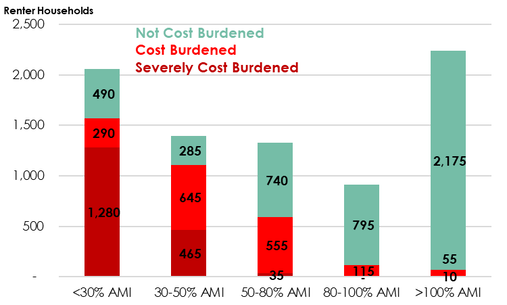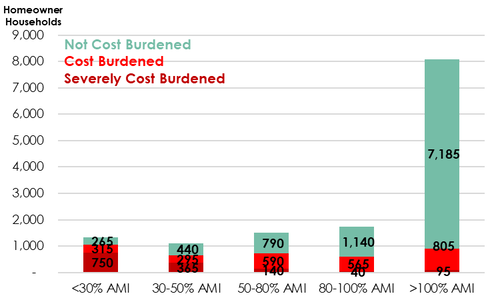Defining Affordability
Housing programs define household income levels as they relate to “Area Median Income” (AMI), or the mid-point of a region’s income distribution. Different housing strategies are appropriate for different income levels. The Housing Action Plan will consider opportunities to support households at all income levels.
The graphic below shows Shoreline’s household income distribution in terms of AMI, paired with appropriate housing strategies. Housing for households earning less than 50% AMI requires deep, ongoing subsidy. These households are best served by public and nonprofit housing providers, who can benefit from Shoreline’s support. City incentive programs can support workforce housing needs above 50% AMI, while the market best serves those above 80% AMI.
The graphic below shows Shoreline’s household income distribution in terms of AMI, paired with appropriate housing strategies. Housing for households earning less than 50% AMI requires deep, ongoing subsidy. These households are best served by public and nonprofit housing providers, who can benefit from Shoreline’s support. City incentive programs can support workforce housing needs above 50% AMI, while the market best serves those above 80% AMI.
Shoreline Households by Income Level and Housing Strategy, 2016
Housing affordability varies by income level in Shoreline for both renters and homeowners. Shoreline’s lowest income renters are the most likely to be severely cost burdened. Affordability begins to improve for households earning more than 50% AMI.


